She holds a torch in her right hand as she raises it toward the sky and a tablet in her left hand, held close against her ribs. The Statue of Liberty is an iconic gift that represents both freedom and independence. In fact, on the tablet she holds, the date July 4, 1776, is written in Roman numerals to commemorate the date of the Declaration of Independence. Discover where she stands tall and proud and learn what kinds of animals you’ll see flying and crawling around the Statue of Liberty.
Where is the Statue of Liberty?
The Statue of Liberty is on Liberty Island in the city of New York. It’s a massive sculpture that commemorates the peace achieved between France and the United States at the start of the American Revolution. A French sculptor, Frédéric Auguste Bartholdi, designed it and Gustave Eiffel built the iron framework. It was a gift from the French and though the statue is green due to oxidation, its exterior is made from copper. To see this beauty up close on Liberty Island, you must hop on a short ferry ride first! Let’s see what animals you’ll find around the Statue of Liberty.
7 Animals You’ll See Flying and Crawling Around the Statue of Liberty
1. Great Horned Owl
Scientific name: Bubo virginianus
The great horned owl is common throughout all seasons in North America and the northern portions of South America. This owl is known for its incredible power and forceful hunting abilities. They are so determined when hunting that they’ll attack porcupines repeatedly, and while managing a kill the porcupine, also manage to kill themselves! Other animals this owl preys on include snakes, skunks, and hawks.
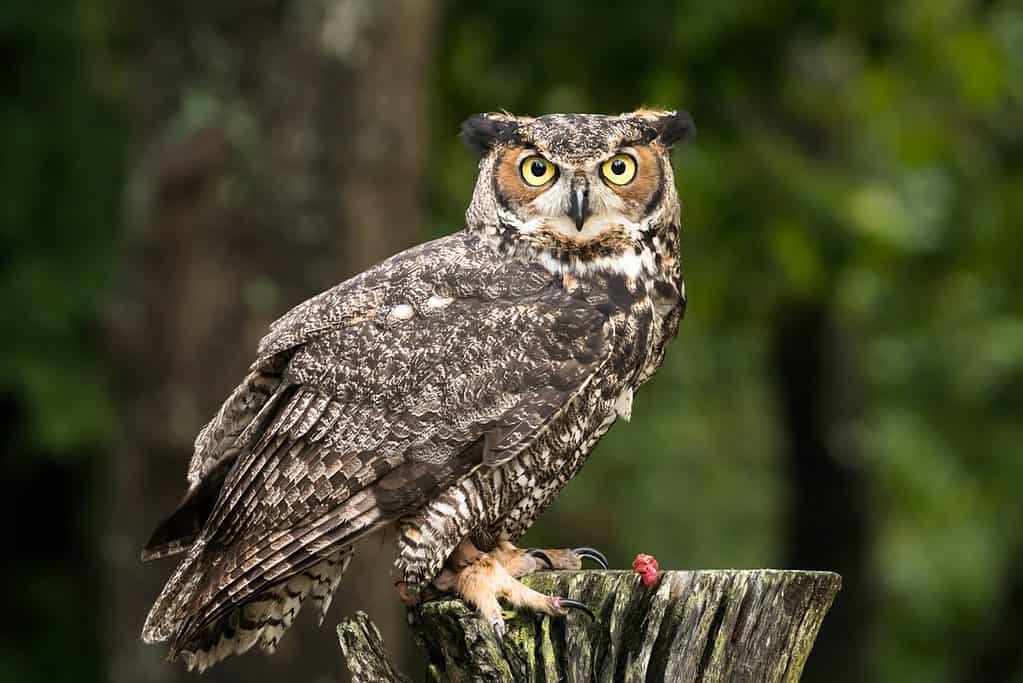
The great horned owl is common throughout all seasons in North America and the northern portions of South America.
©iStock.com/makasana
2. Turkey Vulture
Scientific name: Cathartes aura
Turkey vultures are found throughout North America up to the southern region of Canada and down to the southernmost point of South America. It’s part of the new world vultures classification (as opposed to old world vultures). These are scavengers, feasting primarily on carrion. Dead flesh is quite stinky, and turkey vultures use their sense of smell complemented by their sense of sight to spot these food sources when flying low.
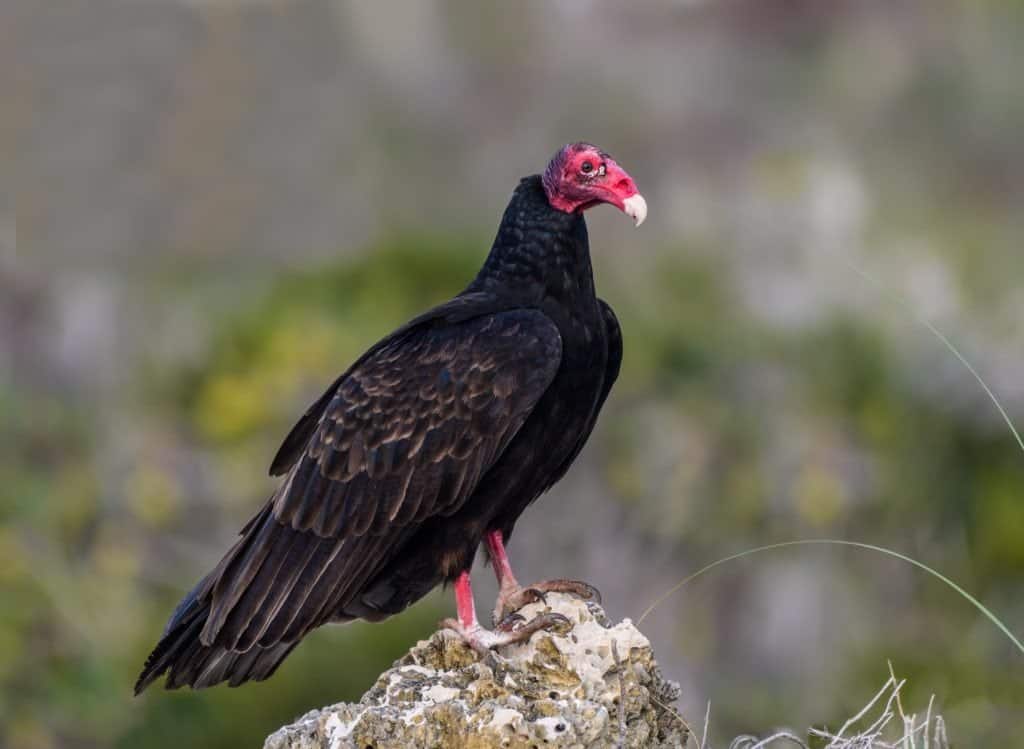
Turkey vultures are found throughout North America, in the southern region of Canada, and in the southernmost point of South America.
©FotoRequest/Shutterstock.com
3. American Black Duck
Scientific name: Anas rubripes
Contrary to its name, the American black duck’s plumage has several different colors, including beige, brown, and tan. All those colors muddle together and make it appear dark, which contrasts its yellow bill and light-colored face. These ducks have a beautiful purplish blue wing patch (speculum) that is only visible when they’re in flight. Its legs add more pops of color with a reddish-orange tone.
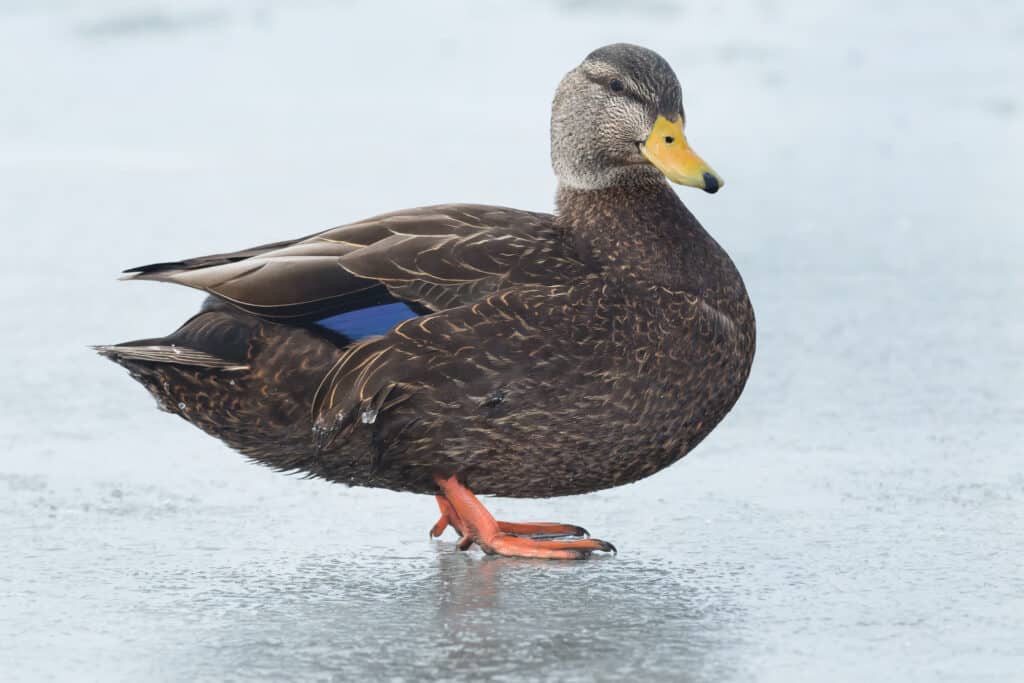
The American black duck is actually several colors, including a purplish blue wing patch that is only visible when it is in flight.
©Paul Reeves Photography/Shutterstock.com
4. Clouded Sulphur
Scientific name: Colias philodice
The clouded sulphur is a beautiful, lemon-yellow butterfly that started as a northern U.S. species but made its way south. They enjoy sunny, open areas as well as roadsides and fields where they enjoy various flowers. Both female and male adults have a single black spot on each of their forewings.
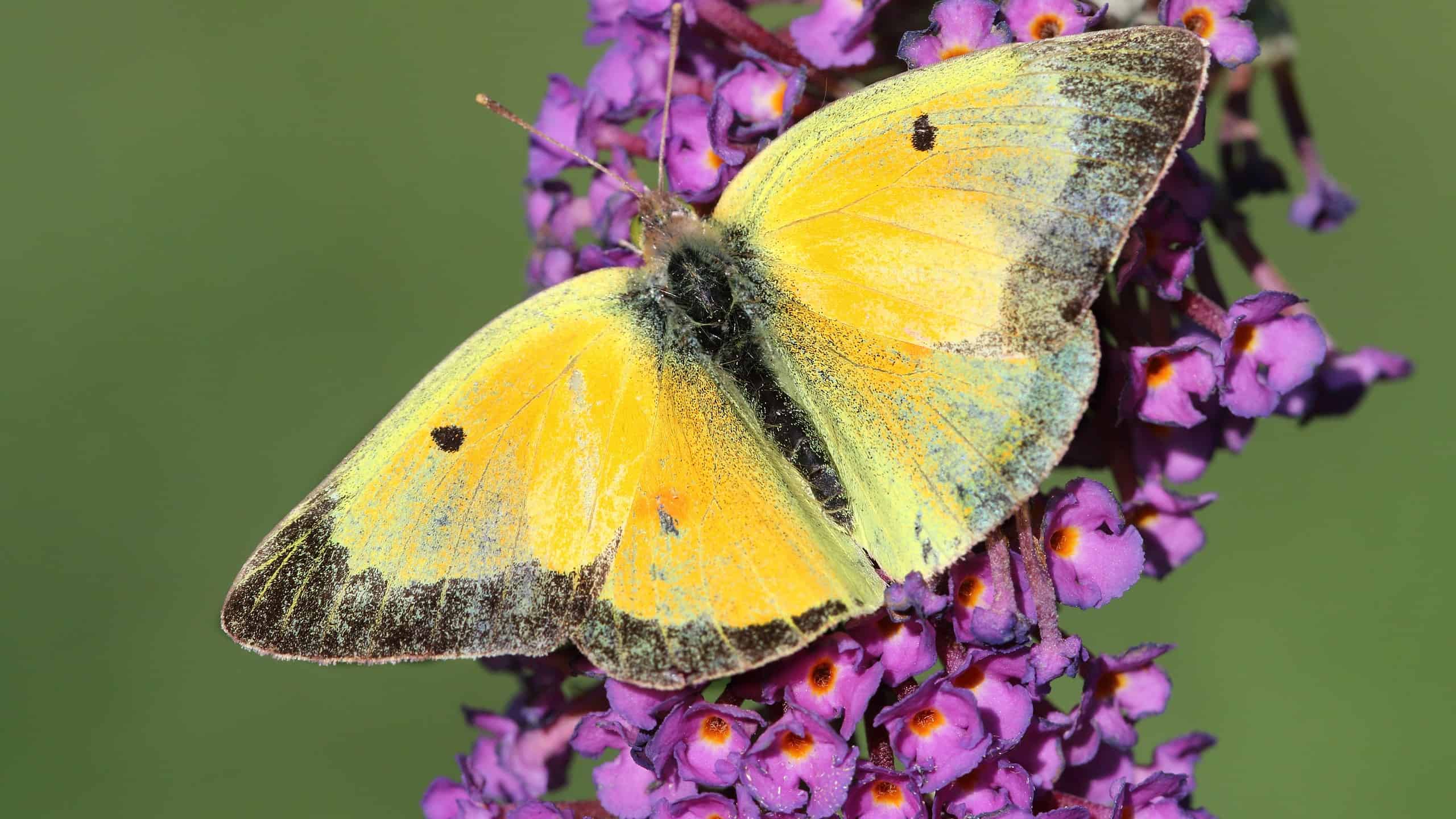
Clouded sulphur (Colias philodice) butterflies live in southeast and central Canada and in the U.S. except for some parts of California, Texas, and Florida.
©Steve Byland/Shutterstock.com
5. Asian Lady Beetle
Scientific name: Harmonia axyridis
The Asian lady beetle is initially from Asia but was introduced both intentionally and accidentally throughout the years to the United States. The color patterns of Asian lady beetles vary. Sometimes they have more of a solid orange color and other times, they have the black spots that you think of when you picture a North American ladybug.
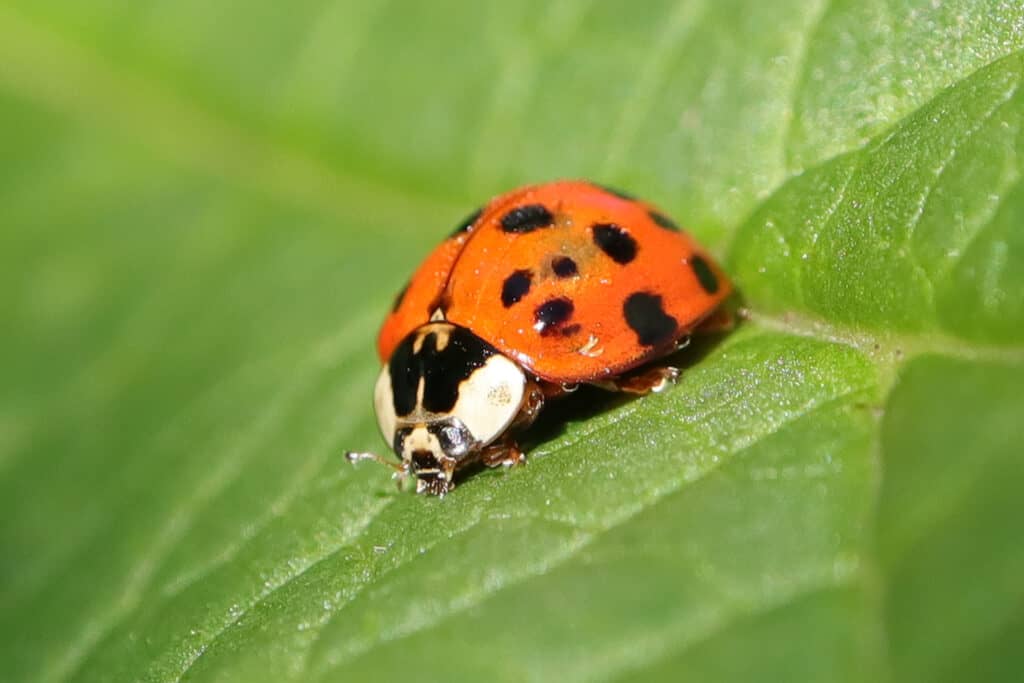
Ladybugs are also known as ladybeetles and ladybird beetles.
©iStock.com/DE1967
6. Yellow Garden Spider
Scientific name: Argiope aurantia
The yellow garden spider is just as bright and proud as the Statue of Liberty, choosing open fields for its web. They find sunny, wind-free places to create their homes, sometimes around the eaves of buildings. Unlike other spiders that leave the center of the web open, yellow garden spiders hang out right in the center of their zigzag webs.
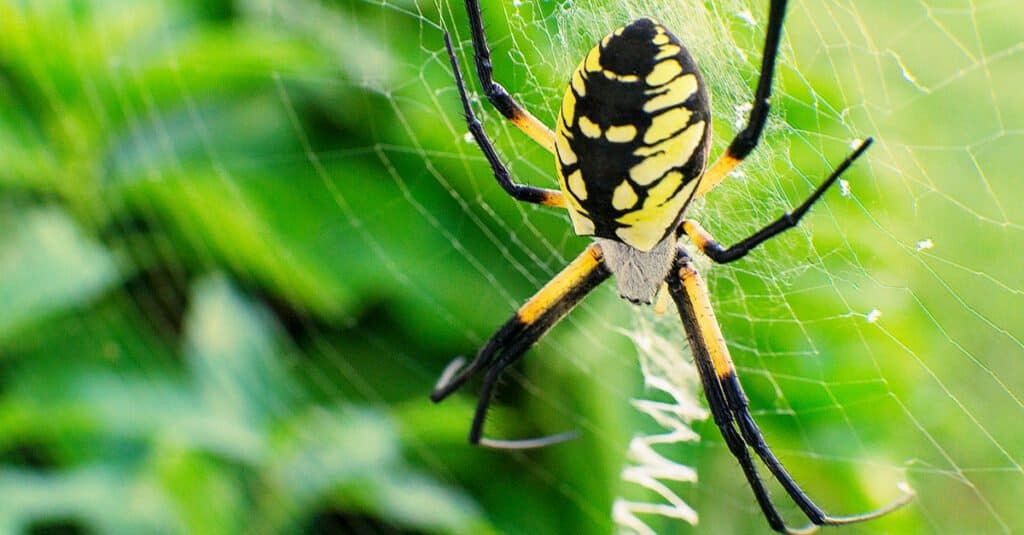
Yellow garden spiders usually make nebs in sunny, wind-free locations.
©Theodore P. Webb/Shutterstock.com
7. Bald-Faced Hornet
Scientific name: Dolichovespula maculate
The bald-faced hornet goes by several names, including the bull wasp and bald-faced aerial yellowjacket. Despite its name, it’s not a true hornet but rather part of the yellowjacket wasp species. Bald-faced hornets are distinguished by the white markings on their faces and the black-and-white colors on the rest of their bodies, unlike other wasps of the same species, which are often black and yellow.
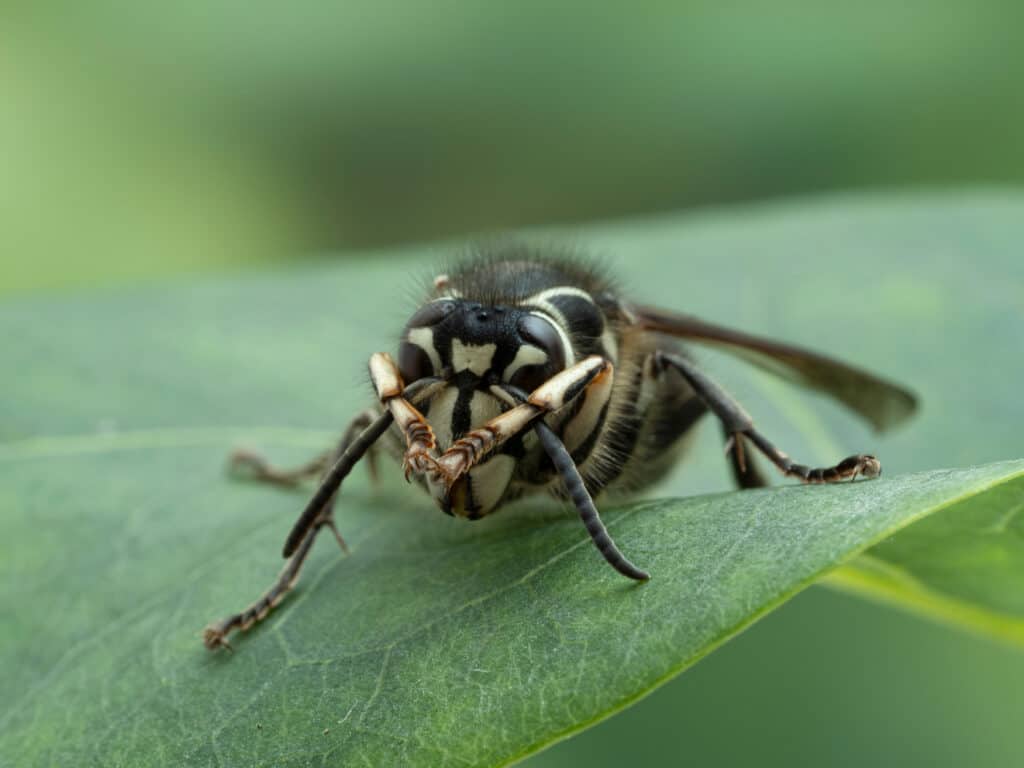
Hornets are social wasps that build communal nests by chewing wood to create a sticky thin pulp.
©Ernie Cooper/Shutterstock.com
Other Wildlife Around the Statue of Liberty
The list above isn’t exhaustive. There are a variety of other birds and critters you can spot when visiting the Statue of Liberty. Some of the other birds include the rock pigeon, ring-billed gull, common tern, herring gull, laughing gull, brant, bufflehead, house sparrow, red-winged blackbird, common grackle, American crow, and eastern phoebe. Butterflies include the common buckeye, black swallowtail, eastern tailed-blue, and monarch. Other flying insects include the blue dasher, western honey bee, brown-belted bumble bee, and Nearctic blue mud-dauber wasp.
The photo featured at the top of this post is © shutterupeire/Shutterstock.com
Thank you for reading! Have some feedback for us? Contact the AZ Animals editorial team.






